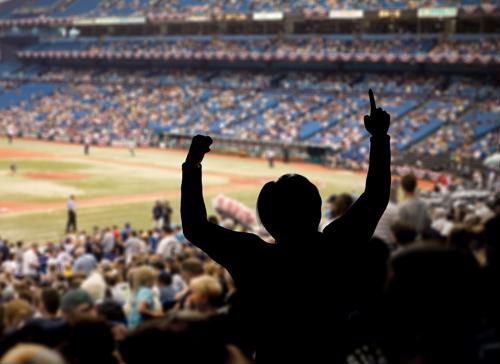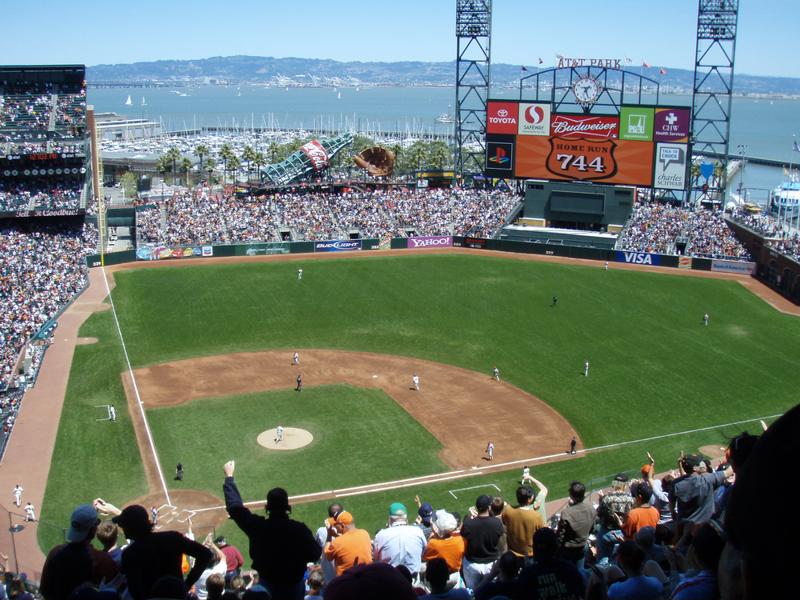
Major League Baseball looks to the future
By Max BurkhalterOctober 25, 2016
The game of baseball has been around for hundreds of years. During the 18th century, athletes in New York, Massachusetts and Pennsylvania played regional versions of the game in which gloveless fielders caught hard-hit balls, runners sprinted between bases, sans paths and hitters swung conical, sometimes flat bats.
In the years since, surprisingly little has changed. Sure, gloves and base paths are now commonplace and bats come in standard sizes, but, for the most part, baseball remains the same game it has always been. However, this reverence for the past doesn't translate well to other all aspects of baseball, namely the parks that facilitate the live consumption of the sport.
More than half of the 30 professional baseball venues associated with Major League Baseball are over 20 years old, according to Business Insider. Wrigley Field, home of the Chicago Cubs and site of the upcoming World Series between the Cubs and Cleveland Indians, opened in 1914.
Modern fans in need of mobile connectivity often run into problems inside these venues, as outdated structural features and unintegrated data infrastructures combine to create coverage black spots. Fortunately, the MLB and its partners are working to bring these ballparks up to par, installing new features on and off the field to support the device-wielding, stat-scanning baseball buffs who fill American ballparks every spring, summer and fall.

MLB owners are rushing to improve device connectivity in their baseball stadiums.
Expanding bandwidth
In September 2014, professional sports team owners and operators gathered at the Bloomberg Sports Business Summit in New York to discuss "the stadium of the future," according to an MLB news release. Participants discussed a variety of innovations coming to venues across the country, including cutting-edge Wi-Fi systems capable of connecting tens of thousands of fans to the internet. Why is this connectivity essential for venue goers who can simply look out on the action, live? Statistics.
Baseball fans have for decades used complex statistics to monitor and quantify player and team performance. With the rise of fantasy sports, these numbers have become even more vital. Now, most glance at statistics as they watch the game, using mobile apps like MLB's "At Bat" to consume and sort fielding, hitting and pitching numbers in real time.
On top of that, many venue goers use apps to connect with friends, post to social media or purchase concessions and merchandise. There are even mobile apps that allow users to monitor restroom lines, Curbed reported. This results in astronomical data usage numbers.
For example, fans at AT&T Park, home to the San Francisco Giants, consumed 1.14 terabytes of data - roughly the equivalent of 3.2 million social media updates - per game over the course of the 2015 season, CBS reported.
"Fans are starting to bring more than one device per game, and you're seeing a lot of fans that might bring three devices," Giants Chief Information Officer Bill Schlough told the news organization. "So it's a wearable, it's a tablet and it's a smartphone."
However, AT&T Park is an outlier among its fellow venues, as it was the first professional sports arena to install Wi-Fi and has since made a commitment to providing Giants fans with up-to-date technology. It now boasts more than 1,300 hot spots, allowing thousands of attendees to navigate the internet without interruption.
Most ballparks possess far fewer connection points and have only recently started looking into high-density Wi-Fi systems. Others are considering Li-Fi, an alternative that involves connecting an Ethernet-wired ceiling devices to light fixtures equipped with light-emitting diodes.The bulbs then flicker millions of times per second, transmitting data with each subtle glint.
Ballpark owners and operators believe such systems will become even more essential, as mobile apps integrate augmented and virtual reality features and require more bandwidth as a result, TechRepublic reported.
"In our mind, connectivity is like running water at this point in time, especially for the younger generation of fans," Joe Inzerillo, executive vice president and chief technology officer for MLB Advanced Media, told the publication. "When you really look at it, it's not 100 percent proactive, but we're doing it now rather than getting to a point where the next generation of fans are frustrated with the connectivity."
"Ballpark owners and operators believe high-density Wi-Fi systems will become even more essential, as mobile apps integrate augmented and virtual reality features and require more bandwidth as a result."
Television meets live action
When big screen televisions and robust cable packages entered the scene in the 1990s and 2000s, team owners grew concerned that fans would no longer visit their local venues and instead opt for watching their favorite teams from the comfort of their own homes. This shift ultimately failed to materialize. However, remnants of this fear remain, as the at-home watching experience becomes more advanced, with sports channels offering up-to-the-minute analysis and on-screen statistics.
To account for this, ballparks have started to add on entertainment areas featuring massive monitors and comfortable couch-like seating. Of course, this comes with a host of new technological demands, as park information technology staff must wrestle with maintaining broadcast signals for perhaps hundreds of monitors.
Still, league stakeholders aren't overly concerned about a potential mass exodus and believe fans, especially those of the younger generations, will ultimately show up to ballparks as long as they facilitate online connectivity and provide a few creature comforts.
"We are mammals who interact," Boston Red Sox CEO Larry Lucchino explained at the Bloomberg Sports Business Summit in 2014. "We are mammals who like to see each other and be next to people and talk to each other. That experience and that instinct will stay with us. So this notion that everyone's going to stay at home and watch it on the television, I do think is a bit overblown."
Technology in the outfield
Innovative web-enabled technology could also find its way on to the baseball diamond, according to InformationWeek. In 2013, researchers at the Institute of Electrical and Electronics Engineers started an effort to harness the power of the Internet of Things to improve baseball officiating. The organization postulates that sensor equipped devices could call pitches and zero in on fast-developing plays to make accurate on-field decisions.
For players, the IoT revolution has already begun. Companies like Zepp Baseball offer sensor-equipped baseball gear that enables players to gain actionable training insights with each swing, Computerworld reported. All they need is an internet connection and the proprietary Zepp dongle that fits on the end of a baseball bat.
These connective technologies and the data-based infrastructures that support them are changing professional baseball and its ballparks, allowing fans to enjoy a centuries-old tradition while also accessing the technology that powers modern life.
Perle Systems has been at forefront of this shift, helping teams like the American League Champion Cleveland Indians modernize their ballparks and IT infrastructures. Contact us today to learn more about our connectivity and device networking hardware.
Try to integrate at least one keyword into the copy. Usually you kind of have to get creative to do it. For example, in this story you may need to mention integrating long cable runs to cover the large distance that wires have to traverse in stadiums, making media converters helpful because they allow companies to mix and match fiber-optic and copper cabling formats as needed.



